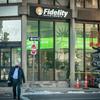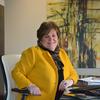If you’ve looked east from Sloan’s Lake Park and played a game of count the cranes, you’ve seen it. If you’ve taken the MallRide from Civic Center Station down to Blake Street for a Rockies game, you’ve felt it.
But the eye-popping numbers in a new report put a fine point on it: Downtown Denver is bigger, denser and more economically alive than it has ever been, and the growth shows no sign of abating.
One thing the area is not, however, is diverse.
Here are some facts: There are 133,478 people now working downtown, an all-time high. Twenty-three thousand people live in the six-neighborhood downtown area, three times as many as called it home in 2000. More than $1.35 billion in new development was completed in 2017 and the first part of 2018 and another $2.26 billion worth is in the works. Those pipeline projects are expected to bring 4,525 more residential units to Ballpark, LoDo, Central Platte Valley, Auraria, Golden Triangle and Central Business District neighborhoods.
Those numbers are just part of the data encapsulated in State of Downtown Denver 2018 report, released Wednesday by the Downtown Denver Partnership.
“Downtown really is the heart of the community, and the heart of the local economy. It’s important for us understand our overall health,” Randy Thelen, the partnership’s vice president of economic development, said this week. “This year, we are pleased to be able to report that downtown is performing exceptionally well.”
The economic indicators — retail vacancy, hotel occupancy, etc. — are overwhelmingly positive. But the report paints a clear picture that not everyone living in Denver is enjoying its prosperity equally. The downtown population is overwhelmingly white, single and well paid.
The report shows that the media age of a downtown Denver resident is 34 and 81 percent of them live alone. Just 4 percent live with kids.
About 76 percent of downtown residents are white. Hispanics are the largest minority group at 8 percent. People of Asian descent make up 5 percent of the population, and black people 4 percent. Denver County as a whole was 54 percent white, 30 percent Latino or Hispanic and 10 percent black or African American as of the 2016, according to the U.S. Census Bureau.
About seven out of every 10 downtown residents has an bachelor’s degree or better. The average household income is $120,099, nearly double Denver’s area median income of $63,000.
At the Downtown Denver Partnership’s State of Downtown breakfast Wednesday morning, the issue of lack of diversity and economic inclusiveness came up more than once, with some painting it as a serious issue that could drag down continued growth.
Related Articles
-
Boozy exercise, trivia nights, brewer meet-and-greets on tap for Denver’s Skyline Beer Garden in 2018
“Denver needs to be a place that is inclusive,” Amy Cara, a managing partner with development firm East West Partners said at the event. East West announced this week that 33 income-restricted condos are now available for purchase by qualified buyers at its Coloradan building near Union Station. The one- and two-bedroom condos, priced between $230,751 and $285,936, are some of the last affordable units created under the city’s now-defunct inclusionary housing ordinance.
“In order to have that breadth and depth of experiences, we need to have all of the people who work in Denver be able to call downtown Denver their home,” Cara said. “It’s a big issue but we need to solve it or we won’t continue to move forward.”
The report details strong growth in downtown’s tech sector. Over the last three years, 265 tech startups have sprouted downtown contributing to a 74 percent spike in tech jobs since 2010. But Lee Mayer, CEO of online interior design firm Havenly, pointed to a lack of diversity in the business community as a potential stumbling block to further success.
“Look around the demographics of this room. If this is representative of the business community here in Denver how do we build national and global companies that sell to the varying populations of companies and people across the world if we’re not even a little representative of the diversity that we see in this amazing nation?” Mayer said at Wednesday’s breakfast. “We’ve got some work to do.”
Like this story? Help support more local journalism.
Become a subscriber for only 99 cents for the first month.




